
Wolf spiders are members of the family Lycosidae, so named for their robust and agile hunting skills and excellent eyesight. They live mostly in solitude, hunt alone, and usually do not spin webs. Some are opportunistic hunters, pouncing upon prey as they find it or chasing it over short distances; others wait for passing prey in or near the mouth of a burrow.
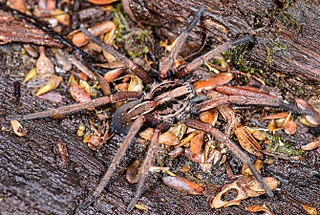
Miturgidae is a family of araneomorph spiders that includes nearly 170 species in 29 genera worldwide. First described by Eugène Simon in 1886, it has been substantially revised, and includes the previous family Zoridae as a synonym, and excludes the family Xenoctenidae. Several genera have also been removed, such as the large genus Cheiracanthium, which was transferred to the Cheiracanthiidae.

Lithobius is a large genus of centipedes in the family Lithobiidae, commonly called stone centipedes, common centipedes or brown centipedes.
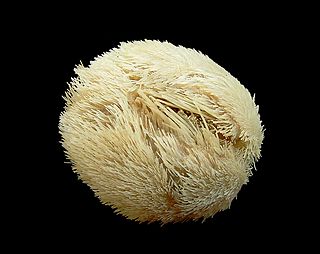
Loveniidae is a family of heart urchins in the order Spatangoida.
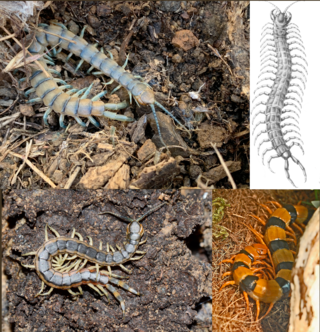
Scolopendra is a species-rich genus of large tropical centipedes of the family Scolopendridae.
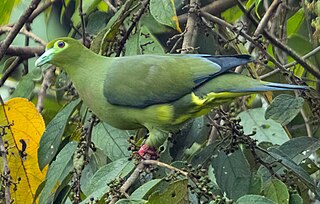
The Sumatran green pigeon is a species of bird in the pigeon family, Columbidae. First described by Dutch zoologist Coenraad Jacob Temminck in 1823, is endemic to Indonesia, where it is found in Sumatra and western Java. It inhabits the canopy of dense hill and montane forest and has been recorded at elevations of 350 to 1,800 m on Sumatra and 600 to 3,000 m on Java. The Sumatran green pigeon is a relatively slender species with a long wedge-shaped tail and an adult length of 29.0–34.1 cm (11.4–13.4 in) in males and 27.7–29.0 cm (10.9–11.4 in) in females. Adult males have a dark green head and body, bright yellow lower belly and undertail-coverts, dark grey tail, and bluish-green unfeathered patches on the face. Adult females are duller and have no grey on the back of the neck, a fainter orange wash on the breast, and no orange markings on the crown or the bend of the wing.

Amblyomma is a genus of hard ticks. Some are disease vectors, for example the Rocky Mountain spotted fever in United States or ehrlichiosis in Brazil.
Fusus is a genus of small to large sea snails, marine gastropod molluscs in the family Fasciolariidae, the spindle snails and tulip snails.
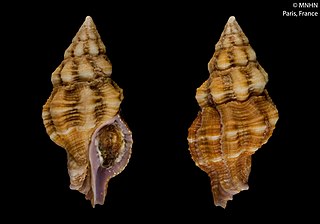
Latirus is a genus of sea snails, marine gastropod molluscs in the family Fasciolariidae, the spindle snails, the tulip snails and their allies.
Osilinus is a genus of sea snails, marine gastropod mollusks in the family Trochidae, the top snails.

Metaphalangium is a genus of harvestmen in the family Phalangiidae.

Trechalea is a genus of spiders in the family Trechaleidae. The species of this genus are found in the New World from the United States south to Peru and Brazil.

Aulonia is a genus of wolf spiders first described by Carl Ludwig Koch in 1847. As of February 2019, it contains only two species.

Geophilus is a large, heterogeneous genus of soil centipedes in the family Geophilidae largely considered to be synonymous with Brachygeophilus. The generic name first appeared in Brewster's Edinburgh Encyclopaedia in 1814 as Geophilus electricus. This genus has a Holarctic distribution.

Euryurus is a genus of flat-backed millipedes in the family Euryuridae. There are about 14 described species in Euryurus.

Scytonotus is a genus of flat-backed millipedes in the family Polydesmidae. There are about 17 described species in Scytonotus.
Nemasoma is a genus of millipedes belonging to the family Nemasomatidae.
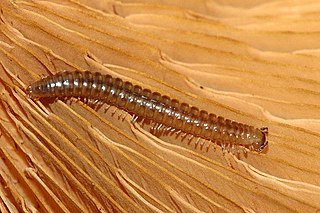
Craspedosoma is a genus of millipedes belonging to the family Craspedosomatidae.

Glomeris ornata, is a species of pill millipede within the genus Glomeris and family Glomeridae.















